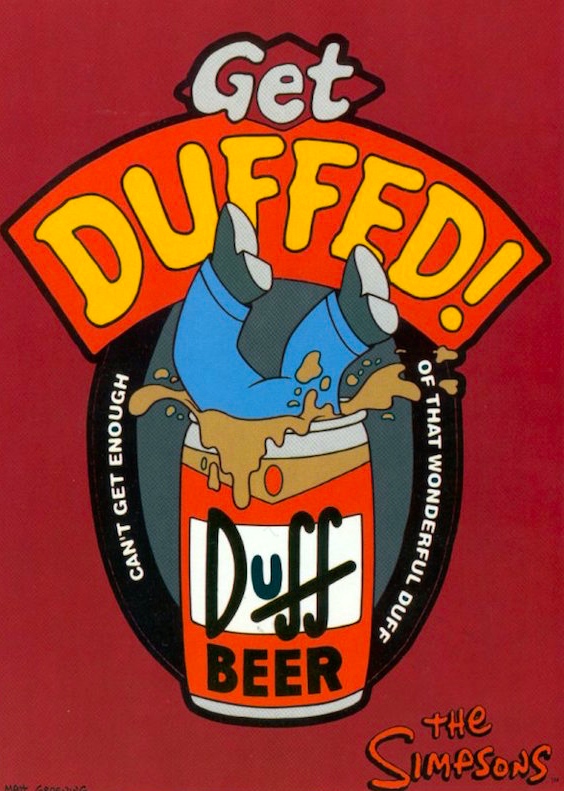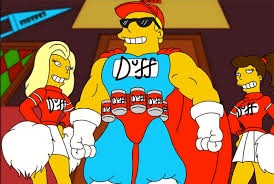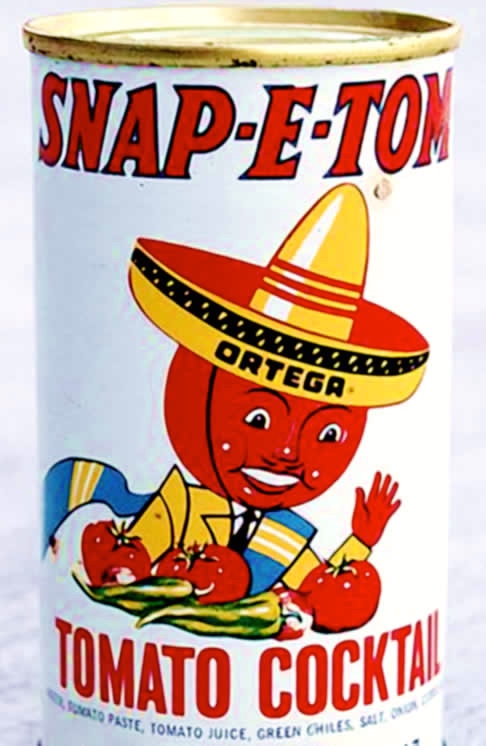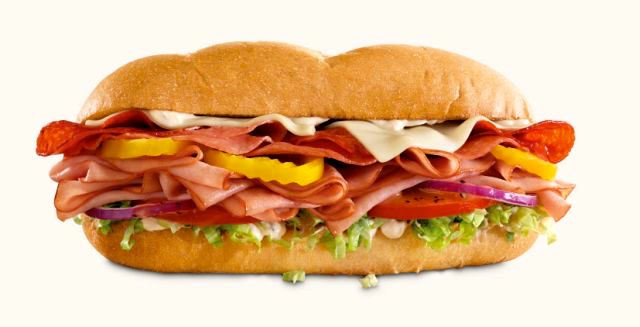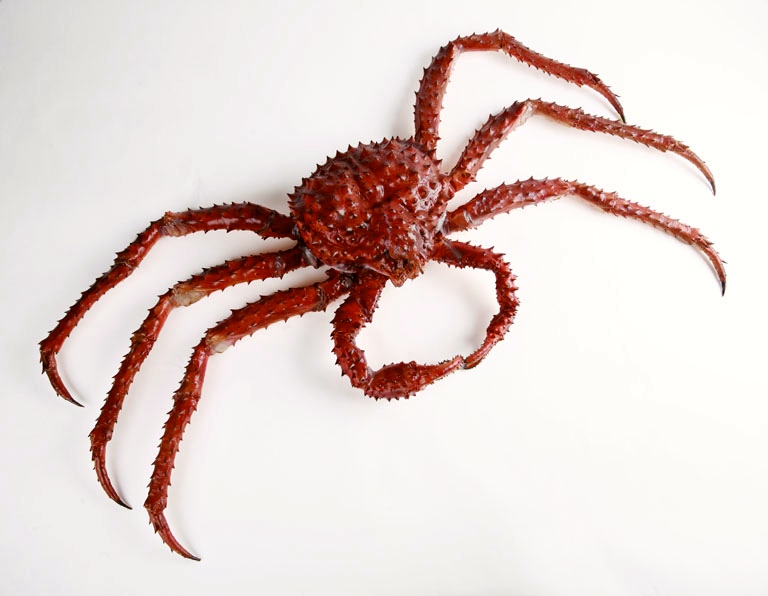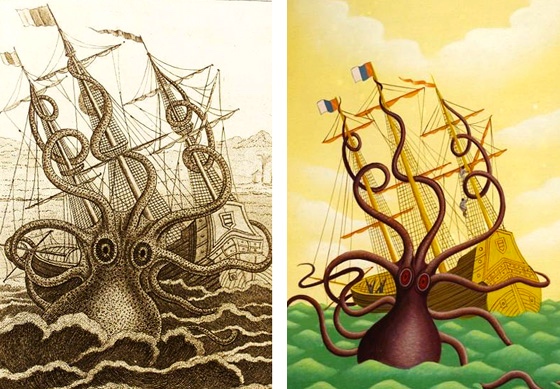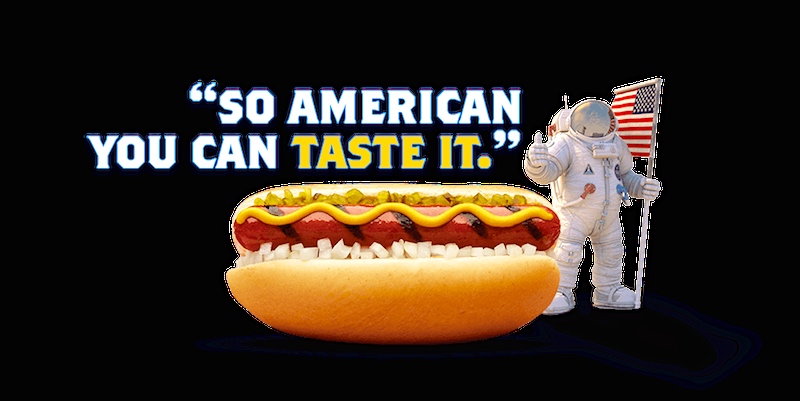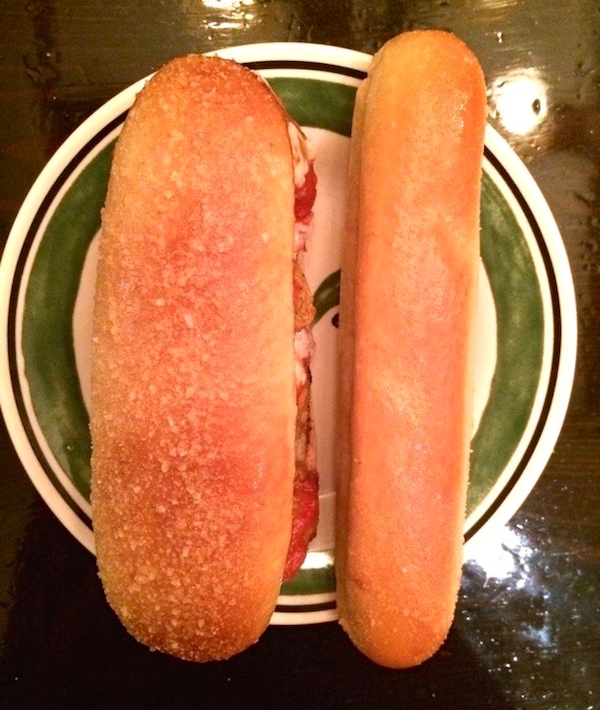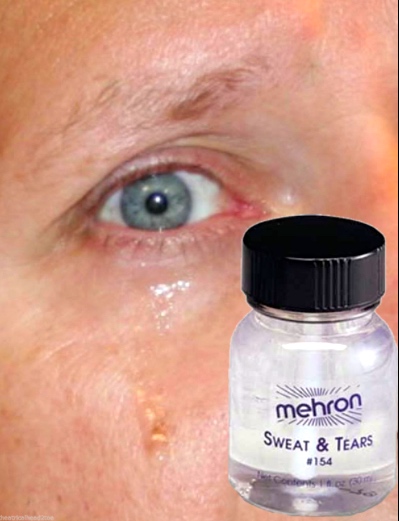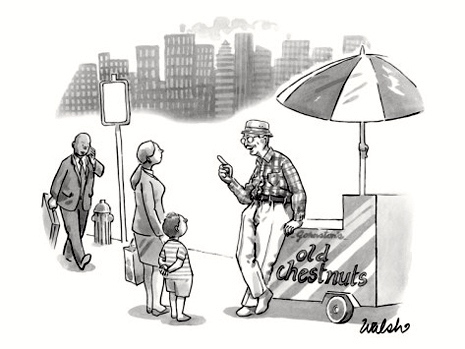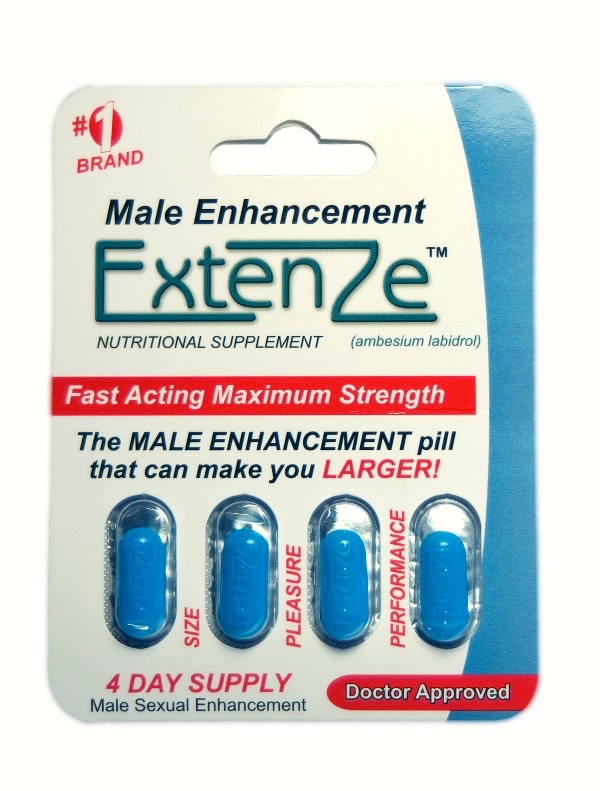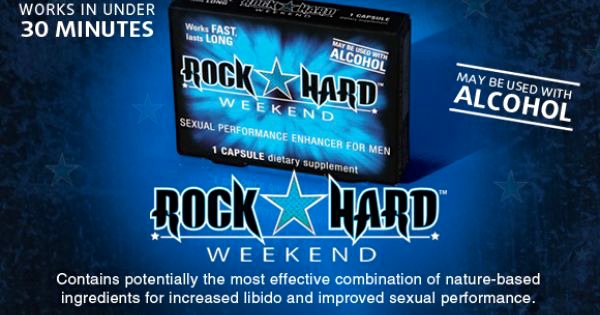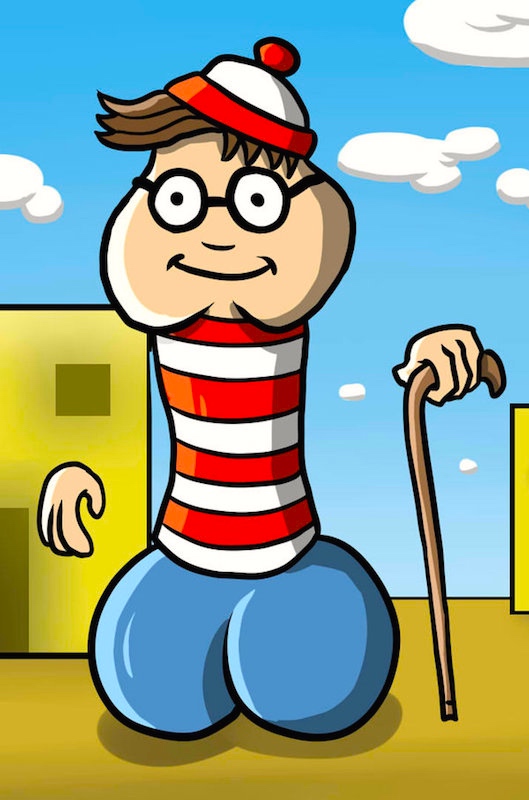In a recent cartoon posting, one (#2) from New Yorker cartoonist Liam Francis Walsh, who frequently plays with language. Here are five more from Walsh on formulaic, conventionalized, or clichéd language. There will be food: chestnuts, hot dogs, and (sliced) bread.
Old chestnuts. First, about names for such language, in particular the idiom an old chestnut for ‘a joke or story that has become tedious because of its age and constant repetition’ (NOAD2):
![]() (#1)
(#1)
A play on the ambiguity of chestnut — a word for the nut (being sold above) or the word in the idiom (with idiomatic old chestnuts being offered to listeners by the vendor, who’s the image of Walsh’s old-chestnut-wielding grandfather), whose connection to the nuts is far from obvious. Here lies a story, discussed in a 3/35/06 column on Michael Quinion’s World Wide Words site:
Q From Gabbi Cahane, London: Any idea where the phrase old chestnut comes from? It’s the subject of an office debate.
A I can tentatively give you an answer, one that is described by the editors of the Oxford English Dictionary as plausible, which seems to be about as good as we’re ever going to get.
It is said to go back to an exchange between the characters in a play by William Dimond, first performed at the Royal Covent Garden Theatre, London, on 7 October 1816. It had the title of The Broken Sword; or, The Torrent of the Valley, and was further described as “A Melo-Drama in 2 Acts, adapted from the French” and also “a grand melo-drama: interspersed with songs, choruses, &c”. The show became popular, to judge from contemporary reports, and was toured and revived in the following decades.
Let a writer for the Daily Herald in Delphos, Ohio, take up the story, in a piece in the issue dated 23 April 1896, which said the play was “long forgotten”:
There were two characters in it — one a Captain Zavier and the other the comedy part of Pablo. The captain is a sort of Baron Munchausen, and in telling of his exploits says, “I entered the woods of Colloway, when suddenly from the thick boughs of a cork tree” — Pablo interrupts him with the words, “A chestnut, captain; a chestnut.” “Bah!” replies the captain. “Booby. I say a cork tree.” “A chestnut,” reiterates Pablo. “I should know as well as you, having heard you tell the tale 27 times.”
This sounds reasonable enough as the source, but there are some loose ends. This sense of chestnut, for a joke or story that has become stale and wearisome through constant repetition, isn’t recorded until 1880. Where had it been all that time, if the source was the play? The word in this sense was claimed by British writers in the 1880s to have originally been American, though it became well known in Britain and according to the OED many stories about its supposed origin circulated in 1886-7. But the play was certainly originally British (Dimond was born in Bath and at the time was managing theatres in Bath and Bristol).
The latter point is easily cleared up, because the play became as popular in the USA for a while as it had been in Britain. The same newspaper report claims that the intermediary was a Boston comedian named William Warren, who had often played the part of Pablo:
He was at a ‘stag’ dinner when one of the gentlemen present told a story of doubtful age and originality. ‘A chestnut,’ murmured Mr. Warren, quoting from the play. ‘I have heard you tell the tale these 27 times.’ The application of the line pleased the rest of the table, and when the party broke up each helped to spread the story and Mr. Warren’s commentary.”
You may take this with as large a pinch of salt as you wish, though a similar story, attributing it to the same person, is given in the current edition of Brewer’s Dictionary of Phrase and Fable. Even if it wasn’t William Warren, it’s not hard to see how somebody else familiar with the play could have made the same quip.
As the joke could have been made at any time the play was still known, and as it probably circulated orally for a long time before it was first written down, the long gap between the play’s first performance and its first recorded use isn’t surprising.
The old in old chestnut is merely an elaboration for emphasis — another form is hoary old chestnut — both of which seem to have come along a good deal later.
No frank like a … Walsh’s cartoon, which includes the wonderfully absurd idea of hot dogs being hawked during opera performances the way they are during baseball games:
![]() (#2)
(#2)
A play on the No WIENER Like X formula, a snowclone with lots of variation in its parts, though X is the key open slot.
(1) The formula begins with an existential expression:
There is, There’s, There ain’t, Ain’t
(perhaps with a just in there: There’s just no WIENER like a …).
(2) Then comes the explicit negative determiner no.
(3) Then a WIENER word, for a frankfurter: most commonly frank or hot dog / hotdog.
(4) Then the basis for comparison, like X, where X refers to a WIENER. The basis can be any WIENER from some city: like a NYC hot dog; like a Chicago hot dog. Or a type of WIENER: like a steamed hot dog, like a chili-dog. Or a WIENER sold by a particular source: like a street-cart hot dog, like a food truck hot dog, or (this is where we came in) like a ballpark frank.
(Digression: the makers of the brand Ball Park Franks, posted about here, have used a number of advertising slogans, but, for whatever reason, don’t seem to have used the obvious There’s no frank like a Ball Park Frank.)
In fact, the most frequent basis for comparison is a brand name, typically one associated with a fast-food restaurant that has its own private-label hotdog:
like a Famous Dean’s hot dog, like a Heidt’s hot dog, like a Portillo’s hot dog, like a Nathan’s, like a Vienna Chicago hot dog, like a Harvest wiener, like a Costco hotdog
Since sliced bread. Now a Walsh with a play on the cliché/idiom It’s the best thing since sliced bread (with replacement of sliced bread):
![]() (#3)
(#3)
(Side note: all the reliable sources say that feeding bread torn into little pieces to birds provides no usable nutrition to the birds and can be actively injurious to them.)
The cliché/idiom is relatively transparent (certanly much more transparent than old chestnut), so long as you understand that sliced bread doesn’t merely mean ‘bread that has been sliced’, since people have been slicing bread ever since there have been loaves of bread and knives. It doesn’t even mean ‘bread sold already sliced’, since pre-slicing can be done manually. Instead, it means something like ‘bread sold already sliced, by mechanical means’. The invention of automatic bread-slicers was a genuine achievement.
So, since sliced bread conveys something like ‘since the invention of mechanical bread-slicers’ (which made it easy for sellers to offer pre-sliced bread in bulk).
A couple popular sources on the sliced-bread idiom. First, “How the Phrase ‘The Best Thing Since Sliced Bread’ Originated’ by Art Molelli in The Atlantic of 2/8/12:
Who hasn’t heard the phrase, “the best thing since sliced bread?” Bread is one of our oldest and most basic sources of nourishment … and just the mention of it brings back vivid childhood memories of visiting my cousins, the Di Rienzos, at their bakery in Binghamton, New York. I looked forward to the times I could ride with them on their truck as they delivered loaves of fresh Italian bread and rolls to shops and schools in their area. The pre-dawn aroma of fresh baked bread remains with me to this day. We must have delivered hundreds of loaves each day, and I always wondered how a middling-sized bakery could turn out so much bread. The answer of course lies in mechanization.
… Bread-making technology spawned many inventions and patents, like the bread-slicer. While the earliest bread-cutting devices using parallel blades appeared in America in the 1860s, they sat on the shelf for decades, awaiting the introduction of other machines capable of producing loaves of uniform shape, size, and consistency.
The first effective bread-slicing machine was invented by Iowa-born Otto Frederick Rohwedder and put into service in 1928 by the Chillicothe (Missouri) Baking Company (the local paper ran a front page story on it). By the 1930s, pre-sliced bread was fully commercialized, and standardization was reinforced by other inventions that required uniform slices, such as toasters. The common phrase, “the best thing since sliced bread,” as a way of hyping a new product or invention may have come into use based on an advertising slogan for Wonder Bread, the first commercial manufacturer of pre-wrapped, pre-sliced bread. With such products rapidly penetrating the American home, automated bread-making was not only an invention benchmark, but also a key indicator of the mechanization of daily life from the 1930s onward.
And from another secondary souce, on the Today I Found Out site, “The Origin of Bread and the Phrase “The Best Thing Since Sliced Bread””, by Matt Blitz on 5/5/14 (with the first part of the story lopped off):
Finally, on May 24th [1921], a full page revealed what all this “wondering” was about: [Alexander] Taggart’s Wonder Bread – “a truly wonderful bread” – was here. As put by Clutter Magazine, “this new, virgin white, 1.5 pound loaf perfectly evoked the otherworldliness of the enormous manufacturing system that was seen as America’s future.”
Within only a few years, Wonder Bread was America’s favorite bread. In 1930, Wonder Bread became the first mass-produced bread to be pre-sliced.
This brings us back to “The best thing since sliced bread.” It is thought by most etymologists that it loosely stems from the … July 6, 1928 back page ad in Chillicothe’s newspaper (“The greatest forward step in the baking industry since bread was wrapped.”) and, later, Wonder Bread’s own constant hyping along a similar vein of its pre-sliced bread.
As for the first documented reference to the exact phrase, this is thought to be in a 1952 interview where the famous comedian Red Skelton “advised” the Salisbury (Maryland) Times to “not worry about television. It’s the greatest thing since sliced bread.”
Short Story Long. With the truncated idiom (conventionalized in this form) long story short ‘to make a long story short’ altered by transposition:
![]() (#4)
(#4)
On his blog, Walsh tells us that the caption was written by someone else, and he was given the task of providing the art — of illustrating short story long ‘to make a short story long’ (said by the woman, dismaying the man). Note that the scheme we use for interpreting long story short has been carried over to the transposed version.
Representation of animal sounds. Finally, Walsh on the representation of animal sounds in conventionalized onomatopoetic words:
![]() (#5)
(#5)
This is the Old MacDonald of the children’s song “Old MacDonald Had a Farm”, featuring what are usually said to be “the noises the animals make” or “what the animals say” (though I’ll have to say more about that). In the cartoon, GM technology is seen as having distorted these noises — transforming (what I guess to be) oink oink to squonk squonk, and so on.
On the song, from Wikipedia:
“Old MacDonald Had a Farm” is a children’s song and nursery rhyme about a farmer named MacDonald (or McDonald, Macdonald) and the various animals he keeps on his farm. Each verse of the song changes the name of the animal and its respective noise. In many versions, the song is cumulative, with the noises from all the earlier verses added to each subsequent verse.
But what does “noise” mean here? You could try to reproduce the actual sound of, say, a rooster crowing or a pig snorting, and there are people who have worked at becoming good at this, just as there are people who are good at imitating bird calls and sounds in general — people who can do “sound effects” well using only their vocal apparatus. But the “noises” in “Old MacDonald” are standardly not sound effects, but instead English words — onomatopoetic, granted, but fitting the sound patterns of English and quite strongly conventionalized. Things like cock-a-doodle-doo and oink are expressions of English, and they differ from the corresponding conventional onomatopoetic expressions of other languages.
Here’s a performance of “Old MacDonald” with an extra wrinkle:
There are five animals here, and what appears on the screen are spellings of the conventional onomatopoetic words:
cows – moo, sheep – baa, pigs – oink, ducks – quack, horse – neigh
But intead of saying oink, the singer does a sound effect for a snort.
Now, there’s a nice, though not very extensive, list of “Cross-linguistic onomatopoeias” on Wikipedia, covering animal noises and much else. The list illustrates pervasive similarities in the conventional onomatopoeias (call them conoms, for short), but also substantial differences from language to language. Take the rooster’s crow. Most of the languages on the list have three- or four-syllable conoms, but cock-a-doodle-doo has five syllables (admittedly, this is conventionally written in four parts). English has an initial velar stop /k/, but most of the languages have repeated /k/ — French cocorico, German kikeriki, Sundanese [in Indonesia] kongkorongok — or its voiced counterpart /g/ — Korean gugugugu. The vowels are all over the map. Meanwhile, there are conoms in which it’s the vowels that count, and they seem to generally be back vowels: Mandarin, ō ō ō / wō wō wō, Turkish ü-ürü-üüü /yʔyryʔyː/. (An r somewhere in there is very common, but scarcely universal.)
A final note on GM technology. If you believe in its dire and deleterious effects (pretty clearly, Walsh does not), it could imaginably alter the noises animals make, but I can’t see how it could conceivably touch conoms.
![]()
![]()



